Israel’s space sector has had a busy few weeks. The Israel Space Agency, part of the Ministry of Science and Technology, held the annual Space Week in late January highlighting Israel’s latest advancements in the space industry, including SpaceIL, a Tel Aviv-based non-profit seeking to put an Israeli spacecraft on the moon this year. Meanwhile, six Israeli scientists and researchers learned what life on Mars is like this past week, minus the 300-day space voyage.
The “analog astronauts” emerged on Sunday from D-Mars, or Desert Mars Analog Ramon Station, a specialized structure simulating the Red Planet’s unique environment built in a secret location near Mitzpe Ramon in the heart of the Israeli desert in the southern part of the country.
For four days during the mission, the “Ramonauts” – a portmanteau of “Mizpe Ramon” and “astronauts” – wore space suits, ate food from capsules, and slept in confined pods in a 15-square meter structure comprised of six compartments, including a control room, labs, sleeping areas and a kitchen. The scientists went about their daily routine as if in space, going out on missions to analyze the effects of cosmic radiation, testing satellite communications and exploring the soil for “alien” life signs. They also underwent a psychological test to document the effects of isolation.
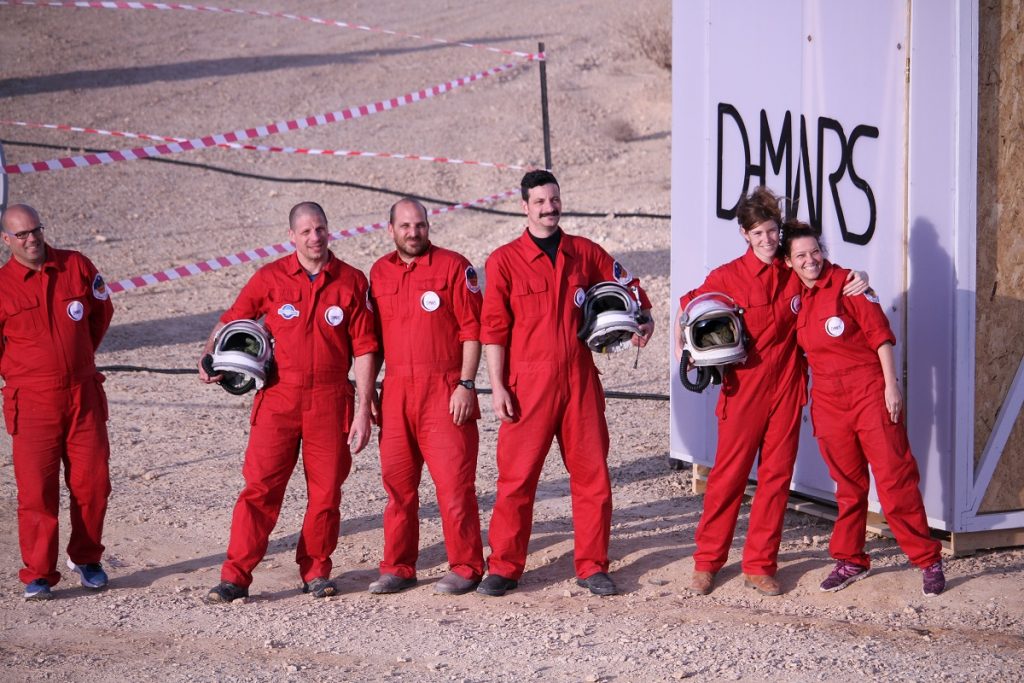
Israeli scientists and researchers emerge from D-Mars. Courtesy
The Mizpe Ramon area was chosen for the simulated space environment – the first one ever created in Israel – due to its similarities to Mars in terms of geology, aridity, and isolation, the Ministry of Science, Technology, and Space said. The researchers were monitored and communicated with a crew at an off-site controls and operations center at the Davidson Science Park in Rehovot.
SEE ALSO: Israelis On ‘Mars’: Astronauts To Simulate Life On Red Planet In Desert Habitat
Guy Ron, a Hebrew University in Jerusalem nuclear physics professor who took part in the experiment and was in charge of measure cosmic radiation levels, said the mission was about exploration but also education.
“D-MARS is half about the research, and the other half is about the outreach. A major part of this project is getting public interest and getting students interested in space,” he told Reuters.
Dr. Hillel Rubenstein, the D-Mars project’s manager and a postdoctoral fellow at Ben-Gurion University of the Negev who also took part, said prior to the mission that it “pulls Israel to the forefront of space, and particularly Mars, exploration,” adding that it presented important cooperation opportunities with the Austrian Space Forum (OeWF), an international body specializing in analog missions. The OeWF had last year selected Israel as one of 19 international experiments for Mars simulation.
The Ministry of Science and Technology announced after the completion of the mock mission that Israeli high school students in a program called “Astronaut School” by the Israel Space Agency would soon participate in a number of “isolation experiments.”
The quest to the moon is on
Meanwhile, at an Israel Space Week event at the Israel Museum in Tel Aviv last month, Minister of Science and Technology Ofir Akunis told NoCamels that the government will be providing SpaceIL with the $7.5 million required to complete its project as part of the prestigious Google Lunar XPRIZE competition with a mission to land an unmanned spacecraft on the moon. In December, SpaceIL announced that it was short of the funds and would likely have to forfeit if the government did not step in.
“It would be a massive achievement for us if we can land on the moon and a great gift for Israel’s 70th birthday,” Akunis told NoCamels.
The Google Lunar XPRIZE competition started back in 2007 with 33 contenders originally. Israel entered the race in 2012 and is now among five finalists in the last stage — the launch of the spacecraft to Moon — vying for the competition’s grand prize of $20 million. The four other teams it is competing against are Moon Express (USA), Synergy Moon (an international collaboration of 15 countries), TeamIndus (India) and HAKUTO (Japan).
SEE ALSO: Fly Me To The Moon: SpaceIL Launches Funding Plea To Complete Space Race Amid Financial Troubles
Sign up for our free weekly newsletter
SubscribeAll the teams are privately funded, with SpaceIL initially securing almost $40 million in total financial backing from American casino mogul Sheldon Adelson, the Morris Kahn Foundation, named after the South-African-Israeli billionaire, the Schusterman Family Foundation, Israeli communications giant Bezeq, Tel Aviv University, and the Israel Aerospace Industries (IAI).
The competition involves placing a spacecraft on the moon’s surface, traveling 500 meters on the moon, and transmitting high-definition video and images back to Earth. Israel was the first international team in 2015 to sign a contract with aerospace manufacturer SpaceX and to have its financial and technical details approved by the contest.
SpaceIL said the funds will go toward paying private space company Spaceflight Industries for the launch, IAI for building and testing the spacecraft and salaries for its 40 full-time engineers.
Space suits, satellites, and space towing services
Also at the Israel Space Week event in January was a number of exhibitors showing the latest research and initiatives in the sector.
The Tel Aviv-based startup StemRad showcased its garment meant to counter radiation to facilitate space travel, developed together with the Israel Space Agency and the German Aerospace Center, in preparation for a future trip to Mars.
Representatives of the Herzliya-based startup SpacePharma, which develops satellites that serve as “remote controlled labs” for pharmaceutical researchers, were also on hand at the exhibit. SpacePharma facilitates microgravity experimentation for biology, chemistry, and physics researchers, arguing that the environment is ideal for such tests. Since civilian launches are on a long waitlist, the company’s satellites launch into space with other international satellites as “hitchhikers.”
The company was part of a recent agreement signed between Israel and Italy for joint micro-gravity laboratory.
Also in the satellite field is NSLComm, formerly SkyFi, an Israeli company building a communications network based solely on nanosatellites and seeking to transform satellite communications with a “fabric-like expandable antenna that greatly increases satellite power and provides in-orbit footprint control via an adaptive flexible sub-reflector.” According to NSLComm, a network of 60 such satellites would be enough to connect the whole world through satellite uplink.
Last month, NSLComm was one of nine Israeli startups selected for joint projects with US companies as part the Israel-US Binational Industrial Research and Development (BIRD) Foundation program.
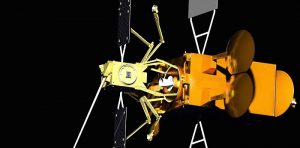
Effective Space Drone. Courtesy
Israel’s Effective Space startup, meanwhile, has developed the Space Drone designed to either “tow” or transport fuel to depleted satellites, and clear space debris for better communications. Satellites that run out of fuel just end up floating around space, costing about $55 million in revenues a year, the company explains, adding that the costs to launch a new satellite – on average $350 million – are prohibitive. Last month, Effective Space signed a $100 million deal with a large, unnamed communications satellite operator to send two Space Drones in 2020 to help prolong the life of two of its aging satellites.
“Our satellite carries enough fuel to maintain a 2-ton typical communications satellite, which is empty of fuel, for 15 years,” said Arie Halsband, the founder of Effective Space and the former general manager of the space division of Israel Aerospace Industries. “In actual fact, we’re expecting to extend activity for another 4 or 5 years, after which our satellite can go and seek out another satellite depending on the contracts that we will sign,” he told Globes in January.
Related posts

Editors’ & Readers’ Choice: 10 Favorite NoCamels Articles

Forward Facing: What Does The Future Hold For Israeli High-Tech?

Impact Innovation: Israeli Startups That Could Shape Our Future



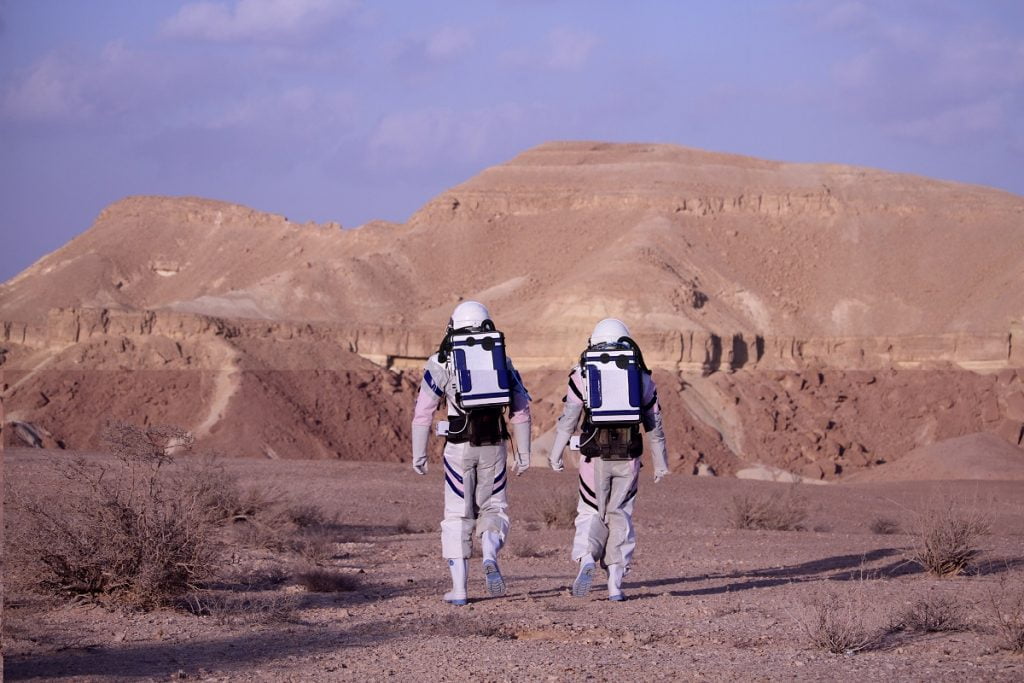
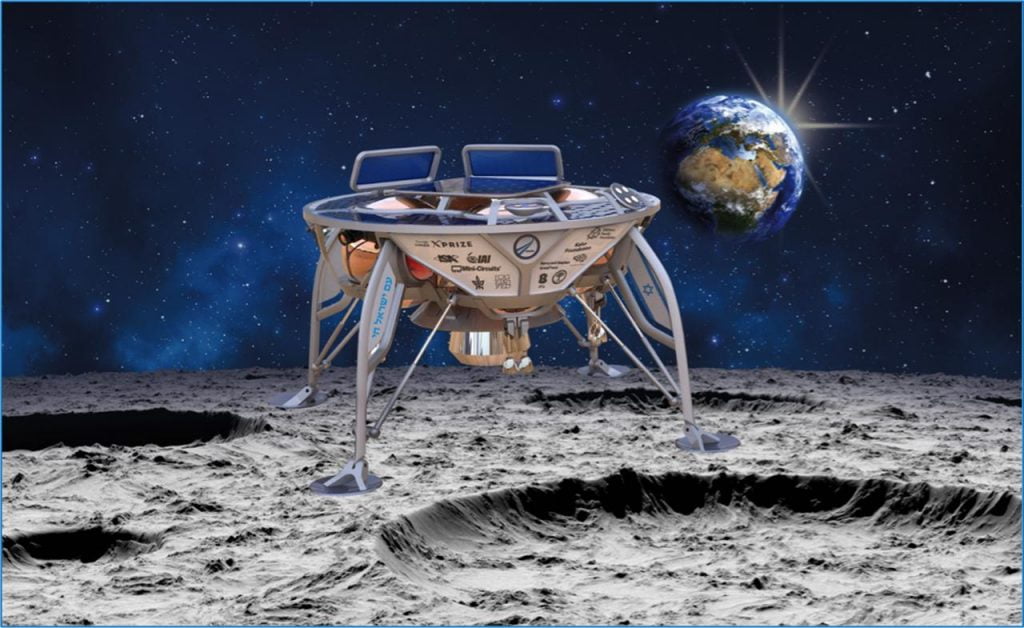
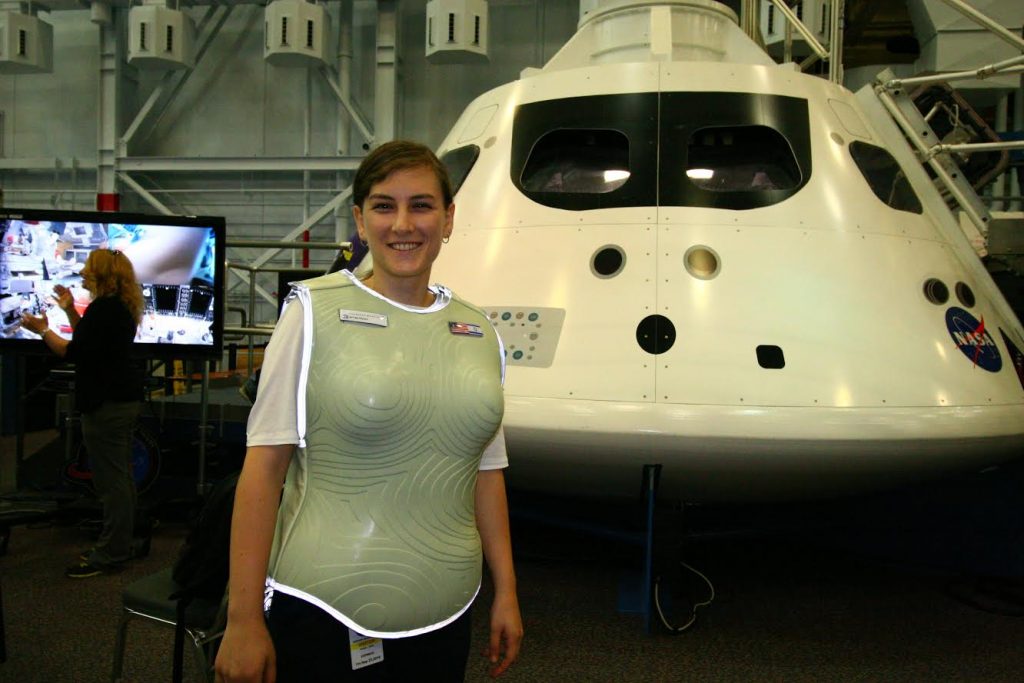

Facebook comments